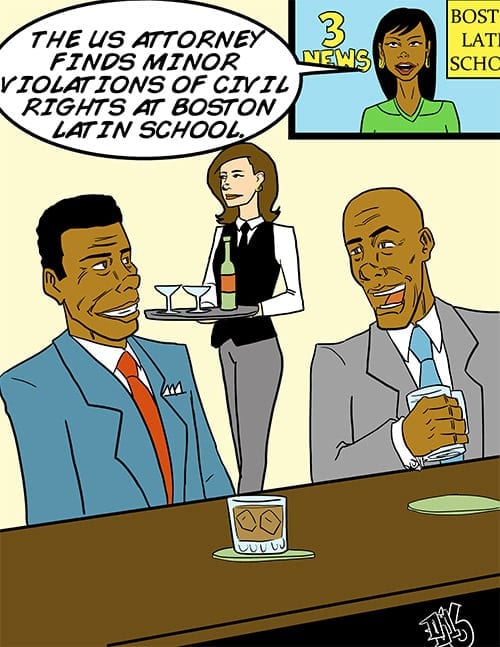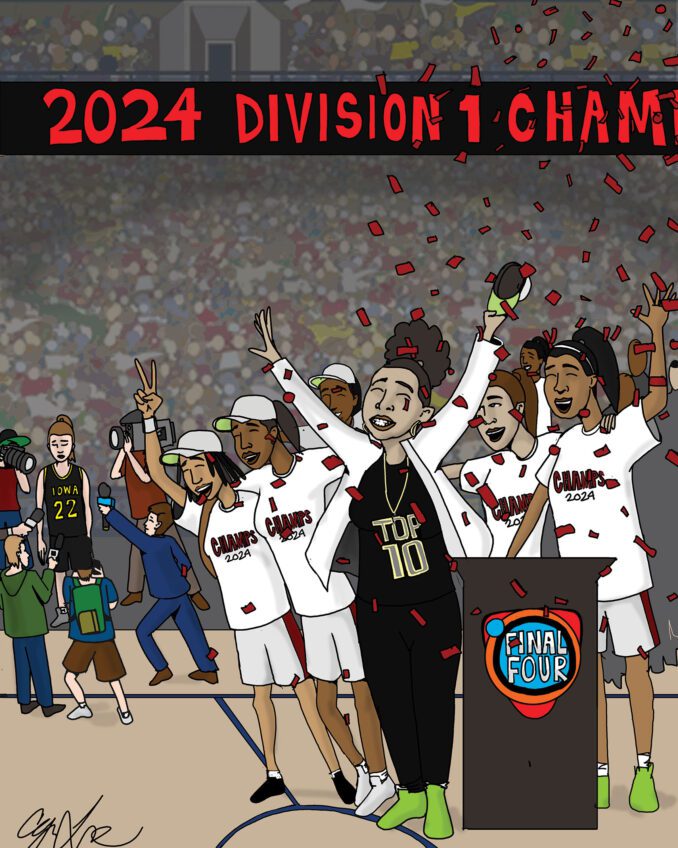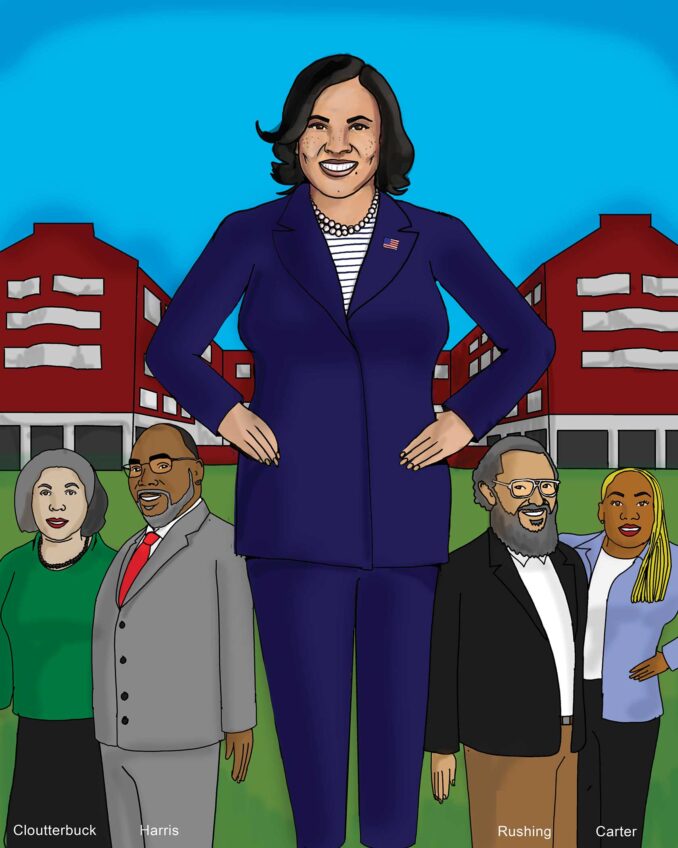
Boston Latin School, the nation’s oldest public school, was established in 1635. Latin’s alumni were involved in the founding of America. Some of their names are recorded on the upper frieze of the Latin School auditorium: Benjamin Franklin, Samuel Adams, John Hancock, Ralph Waldo Emerson. The names of other prominent alumni are inscribed in those hallowed spaces including one African American, Wade McCree, class of 1937. McCree was the first black judge appointed to the U.S. Court of Appeals for the 6th Circuit, and he later became U.S. Solicitor General. His name was added to the frieze to acknowledge the achievements of Latin School’s black students.
The first black alumnus was Parker Bailey, class of 1877. Professor Adelaide M. Cromwell, former director of the Afro-American Studies program at Boston University, has done the seminal work on blacks at Boston Latin School with her publication of the booklet, “Developing a Black Meritocracy: A History of Black Graduates of the Boston Latin School.” There has never been a great number of black students at Boston Latin School, but as recently as 1940, the black population of Boston was only 3 percent of the total.
Like the rest of America there will undoubtedly always be some bigotry at Boston Latin School. However, past incidents of racial discrimination were usually handled privately. Racial discrimination in public education has been declared to be unlawful in Boston since 1855. The case of discrimination that was recently settled pursuant to an investigation by the U.S. Attorney simply removed to an institutional setting what probably should have been a private matter. However, the proposed resolution does little to resolve the main problem: The underrepresentation of blacks in the Latin School student body.
While 41.5 percent of Boston’s school-age population is black, only 9 percent of Boston Latin School students are black. By comparison, only 8.7 percent of Boston’s school-age population is Asian, but 30 percent of Latin’s students are Asian. Only 14.2 percent of the city’s school-age population is white, but almost half (47 percent) of the Latin School student body is white.
Black leaders ought to focus on the more serious problem at Latin School — the lack of preparation to enable blacks to pass the test to be admitted.






